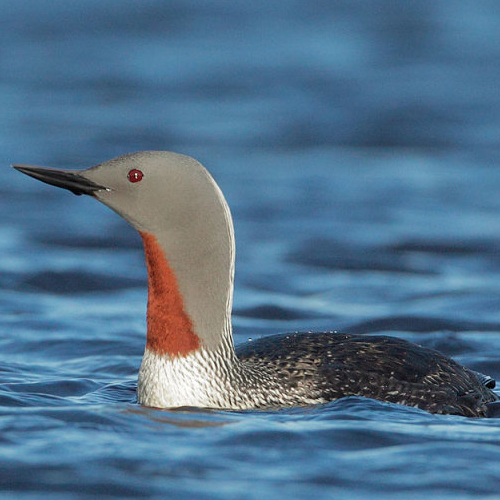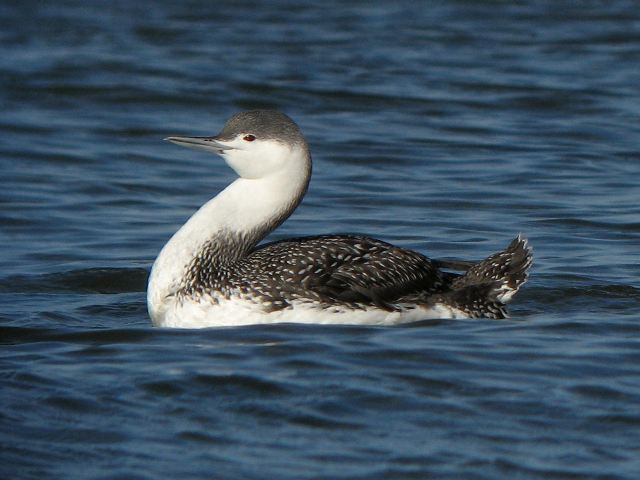General Description
The Red-throated Loon is the smallest and most slender of the loons. It has a thin bill that points slightly upward. In breeding plumage, it has a blackish-brown back, a gray head and neck, and a deep red throat. In non-breeding plumage, it has a gray back speckled with white, giving the bird an overall light gray appearance. The throat and face are white, with the white on the face extending above the eyes; the crown of the head is dark. Juveniles are brownish-gray. Under-parts are white in all plumages.
Red-throated Loons are Common in Western Washington from September-1st week of May.Habitat
Red-throated Loons nest in small ponds in the tundra near larger lakes or coastlines. In winter they spend most of their time on protected ocean bays and large estuaries, although they have been known to winter on large lakes as well. They can often be found foraging on submerged mudflats and are generally found in shallower, more protected water than other loons, usually within a mile of the coast.
Behavior
Unlike other loons, Red-throated Loons can take off directly from land. They can also take off from water without a running start, which enables them to take advantage of smaller bodies of water. During the winter, they are gregarious, feeding in small groups. This is the only loon that regularly forages away from its nesting pond during the breeding season.
 |
| Male Summer not Common |
 |
| Non Breeding Male |
No comments:
Post a Comment